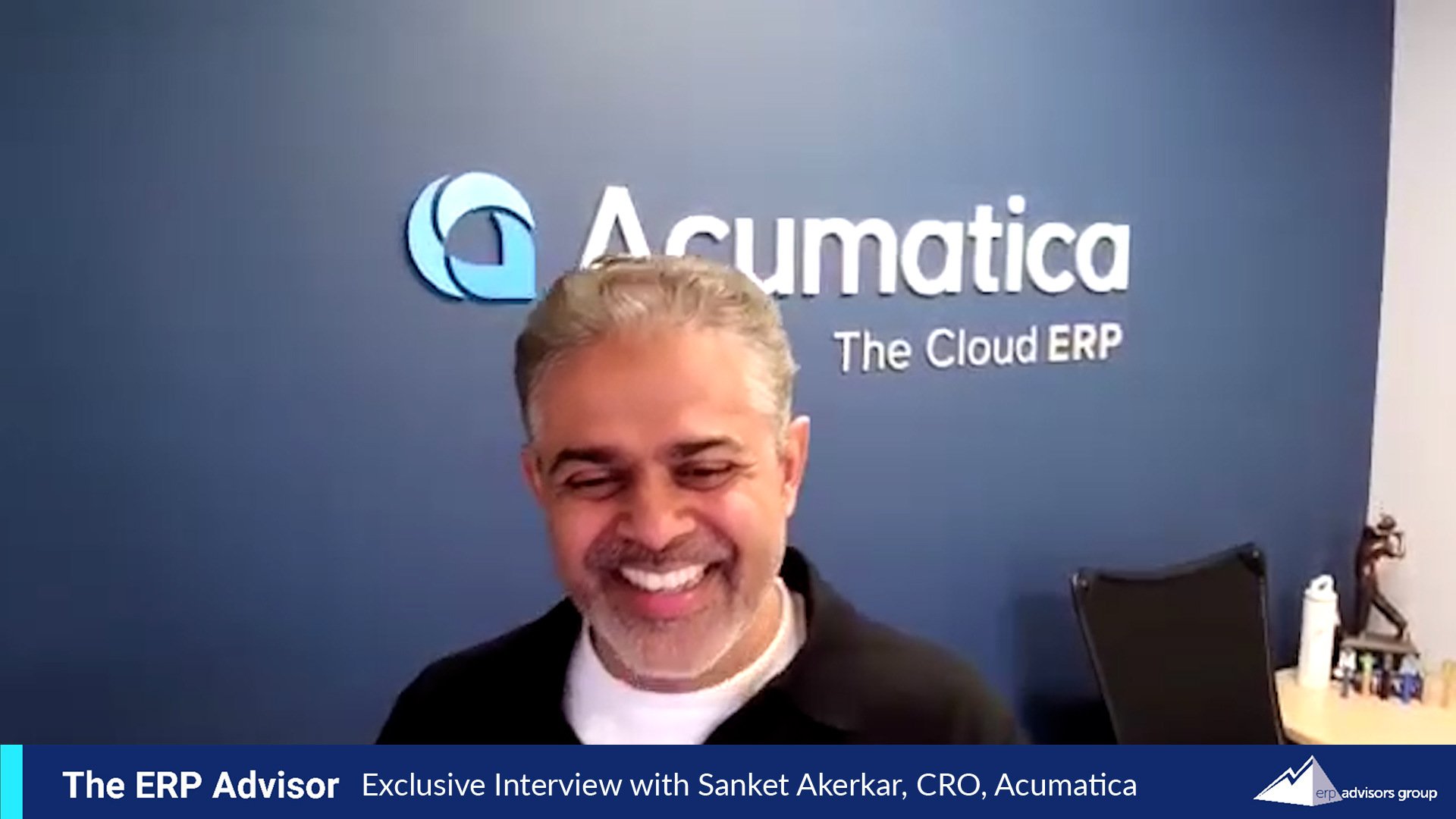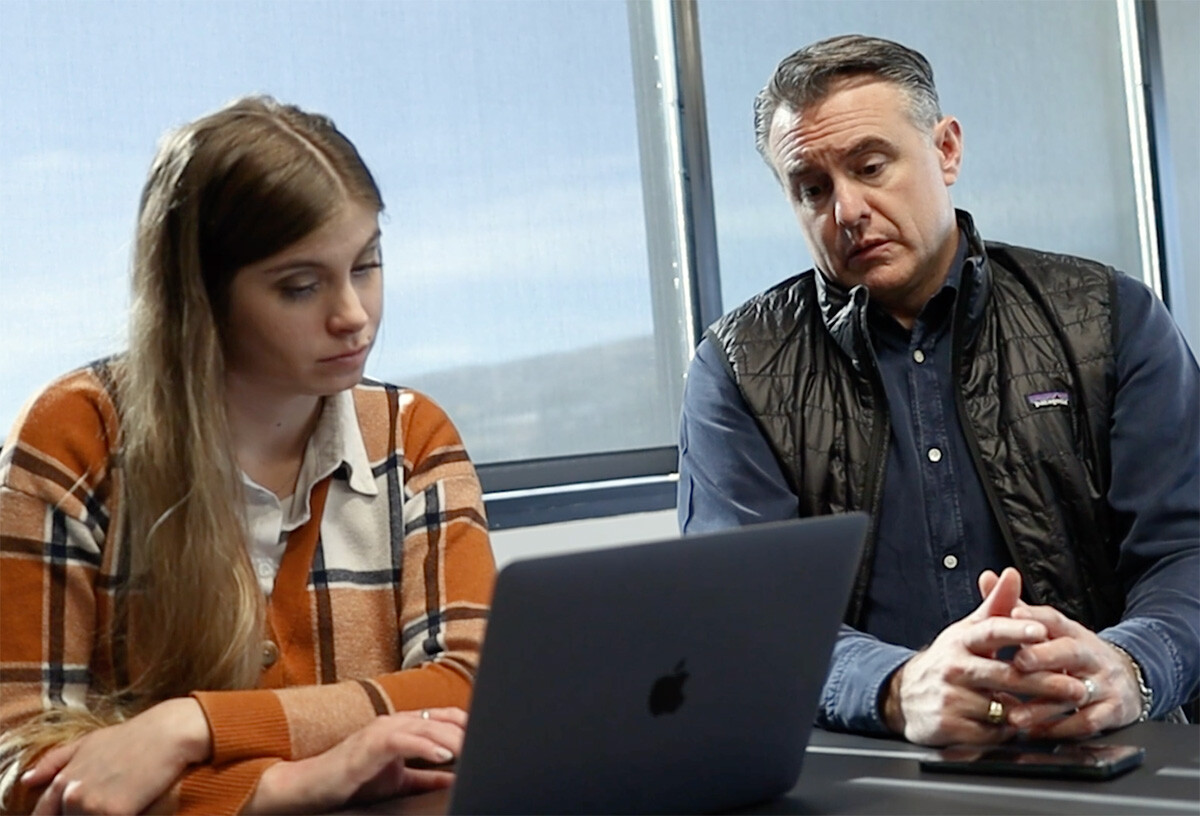
Excel is the world's top accounting system, but spreadsheets can be burdensome to accountants and financial analysts with traditional revenue cycles. They can become even more so with recurring revenue and the many other additional sources of revenue open to digital businesses. Excel also leaves most of the work of invoicing clients, collecting payments, and tracking the entire revenue cycle in accounting to financial professionals.
Automating the revenue cycle with accounting specific software provides significant upside potential in terms of human resources, as well as opening new revenue opportunities which makes this type of software highly valuable to Finance and Accounting, as well as the entire business.
If you are new to revenue cycle services, this article will be a great introduction to the new, exciting capabilities of revenue management tools.
How the Revenue Cycle in Accounting can be automated
The revenue cycle in accounting begins when the deal is made. Whether this deal comes in the form of an order, or a contract, each will ultimately drive the billing. How frequently and how much? If there is recurring revenue, is there a stop date, or is there an evergreen clause to automate the renewal?
Invoicing begins with the contract, whether a human tracks this information, or an application.
Contract to Invoice
Automating a revenue cycle can refer to a system that enable human resources as they receive the contract, put together an invoice and send it to the customer. Maybe the system allows you to set rules for recurring invoices, or it might pre-populate some of the information into the invoice.
However, more advanced systems will scrape billing information from the contract itself and automatically calculate invoices down to amortized revenues. Many of our clients ask about amortization because it is one of those industry-specific details that would be easy for vendors to overlook. However, solutions do handle amortization very well.
Pricing controls
There can be problems when salespeople negotiate poor deals for the business, get paid and then pass over the hard part to the back office, where the team has to figure out how to make it profitable.
Many revenue management applications deliver pricing controls and automate approvals processes which help the organization enforce its rules to achieve profitability goals.
Invoice to Customer
Once created, invoices are sent to the customer. Communication may be through any number of channels:
- Electronic Data Interchange (EDI)
- Applications
Of these three, the last possibility conveniently allows invoices to be sent directly to the customer’s account payable system, streamlining the billing process.
Cash Remittance
Revenue cycle applications can allow payment to be remitted directly to accounts receivable. Once payment is received, invoices are marked as paid, and the system is updated automatically and in real-time. The customer is given plenty of convenient, quick options that drive payment timeliness.
Collections
Collections, however, are one difficult area for software. When the bank receives checks, they do not communicate what invoice was paid, only what payment was received. This presents some challenges to automation.
Sell It, and Forget It
Revenue management software has developed extremely efficient solutions that move from front to back office seamlessly. We call these systems, “sell it, and forget it” for how effectively they turn contracts into revenues.
 It is easy to generate a compelling business case for revenue software. Recurring revenues, payment timeliness, simplified billing, and pricing approvals are a few ways that contract-to-cash, quote-to-cash, and Configure-Price-Quote (CPQ) solutions create significant value and reduce cost in terms of cash, revenue leakage and human resources.
It is easy to generate a compelling business case for revenue software. Recurring revenues, payment timeliness, simplified billing, and pricing approvals are a few ways that contract-to-cash, quote-to-cash, and Configure-Price-Quote (CPQ) solutions create significant value and reduce cost in terms of cash, revenue leakage and human resources.
Value in these cases is often defined in real monetary returns, which means there is a strong business case for these tools. As a result, these tools can be extremely expensive. This is one area where you want to be as informed as possible so that you can choose the right software at the right price.
Three Tools to Automate the Revenue Cycle in Accounting
Contracts Management and Configure-Price-Quote (CPQ) tools have been available and evolving for decades. From a change management perspective, these tools can be difficult because they bring enforcement, and your sales force might give some pushback. However, this is because orders and contracts become standardized during software implementation, which enforces some discipline on the sales side but makes work easier for everyone.
Middle Office
Revenue management is not back office, and it is not front office either. It is something in between. The term “middle office” describes where their applications operate. Their applications can help sales people and contractors finish the contract and move directly into invoicing, making it easy to add recurring revenues as the contract moves into the back office system.
- Pricing
- Configuration
- Pricing approvals
- Discounts
- Recurring revenues
- Renewal caps
Building a business case for CPQ and contract-to-cash
Automating the revenue cycle provides valuable opportunities. Recurring revenues can build a up a large business case very quickly. If you're a $100 million dollar business and you can put in a system that will increase your ability to bill by 1%, you are looking at $1 million annually. After expenses, if you are highly profitable (20%), that means $200,000 per year.
Additionally, there are areas where revenue leakage can be prevented. Financial teams can be significantly more productive when they do not need to deal with Excel — they can do more valuable things than just pore over spreadsheets.
It is easy to drive a business case for CPQ and contract-to-cash which explains why these tools are priced above other software applications. These vendors know you will earn a great ROI. The price tag might be high, but ultimately, the price is justified. Just be sure you include some of these name brands in your search, so that your pricing estimates are reasonable.
As always, if you have any questions about revenue cycle automation, please be sure to ask us! We would be happy to sit down and discuss our experience with you.
Juliette Welch: Good afternoon, thank you everyone for joining us for today's call: How to Automate Your Recurring Revenue Cycle.
Shawn Windle will be our speaker for today. Shawn is the Founder and Managing Principal of ERP Advisors Group based in Denver, Colorado. ERP Advisors Group is one of the country's top independent enterprise software advisory firms.
ERP Advisors Group advises mid to large sized businesses on selecting and implementing business applications from enterprise resource planning, customer relationship management, human capital management, business intelligence, and other enterprise applications which equate to millions of dollars in software deals each year across many industries.
On today's call, Shawn will discuss how to leverage best of breed recurring revenue applications to improve your bottom line and improve the efficiency of your order-to-cash business processes.
Shawn, can I hand it over to you?
Shawn Windle: Sure. Hi, Juliette.
Is the sound okay?
Juliette: Yep, sounds perfect.
Shawn: Alright, perfect thank you. Thank you for your introduction as always, I always appreciate it.
This is one of my favorite topics. I'm really glad that we get to do a presentation today. I’m a trusted advisor on this area.
As Juliette said, when you start looking at this recurring revenue cycle, it's quite interesting because you really get into very specific business processes in a business that are related to the most — frankly, the most important part of the business — the revenue.
I mean without revenue there is no business. So, there's been a lot of changes of recent in the software industry around automating this revenue cycle, so we're going to talk about it.
Yeah, there's a little bit of background noise. If you guys can just mute your phone though, that would be fantastic. I appreciate that.
So, when we talk about automating the revenue cycle, what we're really getting into — what I'm going to get into today — is an overview of what does that even mean? And really get a good understanding for you all on when we talk about a revenue cycle what we’re really talking about.
There's some really key areas of that, and we'll get into what that is, and then the second part that I'm going to get into today is just how software can help automate these processes.
Seems kind of obvious, but you'll see that it's actually — there's a lot of complexities there that should keep in mind.
And then the other thing I'm going to do, which is a little atypical for these calls, but I'm going to get into some very specific solutions to give you some very specific examples of when we talk about revenue automation tools — like what that means. So I'm going to give you a couple apps that we keep running into in the marketplace.
It'll give you a little bit more understanding of what's there, and you can feel free to Google them and that.
As always, we don't endorse any particular app. We don't get paid by anybody but our clients. But you'll see there's some specific ones and I'm sure you've heard of like Zuora that we'll talk to how that fits into the whole thing.
So, with all that said, what is in an overview here for automating the revenue cycle?
So, if you think about a business and you think about — really just about any business, especially today — companies are looking for an opportunity to have a recurring revenue stream.
So, what this means is the most easiest example is always the telecommunications companies.
If you think about your cell phone bill or you think about your cable bill, month after month, there's billings that happen.
So, from the company's perspective — they like to create revenue and drive in more revenue and so to have more of these recurring or repeatable revenue streams really helps to drive the value of the business because the value of a business is not just determined on how much did we sell today? It's determined on how much can we sell over a lifetime of a business.
So, especially if you look at one of our clients is a large data center and they're recurring revenue and their revenue cycle is quite interesting because they have thousands and thousands of customers. And every month they have to bill all thousands of those customers.
So, billing is definitely a major portion of the revenue cycle. But if you actually go back to the very beginning of the revenue business process — you may even call it the order-to-cash process — really revenue starts off with a contract being sold or booked basically where customer says yes I want that.
So, the contract starts the whole revenue process, and you could also call it an order but I'm going to call it a contract because usually for companies where these revenue automation systems make sense, they do contracts.
So, a contract may say, I'll use the data center example, we want this much space, we want this much heating and cooling and this much electricity and we need this many racks and maybe they buy some cloud services where they're maintaining your apps, too. Let's say there's — keep it simple with four line items.
And those are what we wanted for three years and at the end of three years we just want it to renew automatically and just renew forever — also called an Evergreen clause in the contract.
And so, all those terms of the contract are agreed upon up front as part of the sales process.
And then the salesperson and the customer agreed, this is where we're going to buy, customer signs off on it, done.
Now you have a finished contract. Now the terms that are in that contract are really important because they are what ultimately drives the billing.
It's what we're billing, how frequently, and how much. Those are — all those questions are answered in the contract, so let's take that information and then let's use it to drive the actual billing.
So great. Sometimes a person takes that information and puts together an invoice and then they send it to the customer.
Other times a system will say, oh okay, you've got all that information about the contract. I'll just take that information and I'll automatically calculate what the invoice is. I'll create the invoice and I'll send it to the customer without anybody doing it.
The system actually does that. We call that the set it and forget it method. That is by far the absolute ideal seen for every customer we've worked for is to set that contract up and then forget about it and just let the system do the billing.
So, the bills get sent, then the customer hopefully remits the cash either through a lock box at a bank or they send the track checks directly back to the company and the AR group processes those payments, applies the payments to the correct invoice, closes out the invoice, shows that it's paid. And that's it.
Now there's of course the whole AR process with dunning letters and putting your customers on notice and delinquent accounts and that.
But that's also part of the order-to-cash process, too, but we'll just keep this super simple.
So, when we talk about an overview of the revenue cycle, we really mean the contract being created, the invoicing details being gathered, the invoice being created and put into a presentment basically that goes to the customer and then the customer remitting the cash.
That's the basics on what the revenue cycle is, and I'm sure everybody on the call knows that. But it's good to just touch base on it.
The only other thing we could add on top of that as part of that process is in most instances when you sell a big piece of software let's say, the customer really doesn't receive benefit for that software upfront.
So, we actually have to amortize the revenue for that sale over a certain amount of time, so you'll hear this phrase that's called revenue recognition. I'm sure if there's CPAs on the call, they're very familiar with that. But in industries like software, even data centers, telcos, there's different rules for how you do revenue recognition.
So, revenue recognition is a big chunk of that revenue cycle also, and that deals with the accounting.
So, even though you sell something and get paid for it today, you might have to recognize that revenue over time. That's basically what revenue recognition is very simply.
I think I've taken courses — my advanced accounting — on that. It can be much more complex than that, but you get the idea.
Okay, so now we have gone through the overview of the process.
Now I want to talk about how software can help automate that process.
So, up front and one of the more exciting areas, frankly — ERP sometimes is like, wow this is great. Yeah, not really exciting.
But when you look at the automation revenue cycle and we really like helping clients with that because it's fantastic — the options, especially in this area of contract.
So traditionally a contract was done in paper. And it was a negotiation between a salesperson and a customer, and if there's any accountants on the call, they know how they feel about salespeople, especially with some of these recurring revenue contracts where they'll just negotiate anything. And then they sign it, they ring the bell, they get paid, and then they pass all the hard parts over to accounting who has to figure out what the heck to do with this contract.
So, wouldn't it be great if there is a way that we could control the pricing? We could control what was sold and if you buy a rack then you have to buy electricity also so you can control the items that are included on an order — again from the data center example.
And wouldn't it be great if they wanted a big discount that then we could automatically run a routing to the salesperson boss and then to her boss’s boss and all the way up depending on the discount and just automatically track that and get it done?
Well, there are tools that do that.
So, the first step in how software can automate your revenue cycle is on your contracts, contracts management tools. You may also hear the phrase configure price quote tools.
They definitely have been in the market for many years now and you see a lot of benefits from those tools.
They do take away the flexibility that the salespeople don't like, but it puts in a lot of order that the entire business appreciates.
Even the guys that have to do the fulfillment and the gals that are provisioning all this equipment — it's much easier for them to do that when the orders are standardized, so having contracts management automation is awesome.
The next area of automation that software can help with on this revenue cycle is around billing.
So, if a system knows the billing terms, of course the customer, what they bought, how much, when to bill them. Then the system can create — the invoice can create the presentment of that invoice in the format that the customer can consume and then can send that invoice to the customer.
Now that may be through email; it may be through electronic data interchange like EDI in a specific format. I think it's — I can remember the record, but the invoice can be sent directly to the customer. I want to say 8:10. Or it could even be through an application integration like an app-to-app integration where an invoice is just sent directly to the customer system, their own AP system. And then goes right into their accounts payable system. We can get paid.
So, the billing applications in the market today are also fantastic, lots of great automation.
Honestly, when we talk to clients about automating their billing portion of their revenue cycle, very often when we look at their pain points and limitations to growth and we're talking to usually the gal or the guy who's been doing the billing year after year, we kind of identify that sometimes we're missing out on items that we should be billing that we’re not because they just forgot about them or they just leak through the system.
So, you hear that phrase “revenue leakage.” So, automating that billing process is a fantastic option for many companies.
The third area of automation, how software can help on the revenue cycle is on recurring revenue. So, what we mean there — and if anybody on the call — God bless you if you don't have one of these systems — you have a waterfall schedule which is built in Excel.
Excel is the world’s top accounting system. And the waterfall schedules show basically for each contract how revenue needs to be recognized month by month. And it's called the waterfall because the revenue, the projects that the contracts permit that we've closed, they end at a certain point and so our contracts today go out longer than the contracts that we sold last year.
So, it looks like a waterfall is why it's called a waterfall schedule.
That's a little information there — might be TMI — but that's where the waterfall schedule comes from.
And you can imagine when you have thousands and thousands of customers and you have these schedules in Excel so that the poor accountant then has to add up how much revenue do we recognize for this month? And you'd think you'd be a simple column total, but it's not.
When you're dealing with Excel, there's a lot of manual things that can happen. Your formulas can go corrupt. Lots of issues can occur there.
A recurring revenue engine or system basically does your waterfall automated in a database management system so you're not going to run into the problems with Excel. So, that's very exciting because I feel for the people that have to do those waterfall schedules every month.
Then really, the last area of automating your revenue cycle really is around AR and collections, remittance of cash, that type of thing. And not a lot of headway has been made of recent in that area, but there's a lot of tools that already exist and have for a long time that help in that process, so of course you need your AR aging reports and that.
But being able to apply payment to a specific invoice — that's really critical and that's hard sometimes when you have a lock box where the bank receives the checks and then they just send you an electronic file saying, hey, here's what we got, but they don't tell you what invoice, particularly the customers payment was for and maybe the customer didn't tell the bank, so there's some challenges there and some automation you can do around that.
But just managing that customer collections process, keeping in a good relationship with the customer, and still getting your cash collections, there's some great tools that can help you with that, too.
So, those are the four areas when we talk about how software can help automate the revenue cycle that we look at again are contract billing, recurring revenue, and accounts receivable collections.
So, now I want to talk to you about some specific apps that are in the market, and I want to give you a bit of a framework that you can evaluate these applications within.
And that's — I mean on these advisor calls what I really try to do, whether it's me or if it's other folks that are doing the calls, if we want to give you tools that can really help you in the marketplace today so that you're a more informed buyer — and this is one of those areas where if you're not informed, I mean, you're going to make a bad decision because this stuff is expensive — very expensive. But it's very powerful software, and that's why it's so expensive.
So, here's a good framework to think with.
This is the first one and it's called the middle office. So, overtime ERP, enterprise resource planning, really focused on back office processes — accounting, inventory, maybe even some project management, and even if you look at human capital management, HR payroll — it’s back office processes. Those are pretty well defined and solidified now over time those systems exist.
So we all know what back office means.
And then, yeah, I was at Accenture when Siebel really took the corporate world by storm in the 90s. Siebel systems — Joseph Siebel maybe was the gentleman who was the founder there. He wrote a CRM, a customer relationship management package and nobody knew what CRM was. He was the first one. And there were others before that with smaller packages like Act or others.
But you have these tools that the people that were in your front office — your salespeople, your customer support people, maybe inside salespeople could use and they could manage their whole sales pipeline, tracking accounts, and contacts and calendars and tasks and activities and everything else.
So now we got all this inside indoors sales pipeline. And really what the front office was doing — now we had tools for the front office. We always had tools for the back office, now we got tools for the front office.
Well, what's really happened is you see this this emerging area called middle office — as in between the front and the back — literally that simple.
So, the thing about software as the analogies and the names are usually pretty straightforward. The middle office says, well, once sales gets the contract or they're close to finishing the contract, let's take that, then let's finish the contract basically we'll move right into the invoicing, and we'll even help with the recurring revenue, and then we'll pass it to the back office system.
So, there's this nice little area, and Zuora — it was a great firm. And I think they really came up with this middle office concept — it may have been Gartner — I'm not sure where it came from.
But it’s this area of where we you hear this recurring revenue cycle — automating the revenue cycle — that's really where you see the solutions fit the best is in the middle office.
So that's a good framework for you to look at.
The second framework to think about is — and I'm sorry when I say middle office I really do think about Zuora because their tools they do this up front solidifying the quote, getting the pricing straight, getting the items straight — the configuration of the items — the approvals on the discounts. They do a lot of that stuff and then they move into the recurring revenue — pardon me, the recurring invoicing that's happening.
And you can apply your renewal caps, and I mean you can do anything with those contracts. And then you have your recurring revenue tools to do your waterfalls. They help automate those processes so they really have solutions that do it all.
Another framework I want you guys to think with, too, here — and we'll probably wrap it up — is around configure price quotes, so CPQ.
Not so much a new term, but maybe some people haven't heard it. But configure price quote, a firm called Aptus and another one called SteelBrick really brought CPQ to the mainstream.
And SteelBrick got bought by Salesforce. So, Salesforce has a Salesforce CPQ tool that's based on SteelBrick.
That framework is really interesting, because what that does is it drives standardization up front and the quotes — I'm putting together the quote like I've said several times here in the standard manner, so that then we have all of the glorious details of the contract codified so that then we can just push those over to an invoicing system to actually do the invoicing.
So, CPQ from a technology perspective, we love it honestly. From a change management perspective it's hard because you're actually putting in some enforcement on Salesforces sometimes that aren't used to having that.
But CPQ is another framework to think with that is really beneficial here when we talk about automating the revenue cycle.
So, just to summarize, we talked about what does it even mean to automate the revenue cycle, we want to look at the contracts, the billing, the recurring revenue, want to look at the AR collections areas on specific ways to and means to automate our revenue cycle itself. I keep using the word recurring because every business that we work with is looking for more recurring revenue opportunities, including us, and so this concept of having to bill over and over and automating that process is just becoming more and more of a big deal.
And if you're $100 million business and you can put in a system that'll increase your ability to revenue by — or pardon me, your ability to bill by 1%, you're looking at ten more million dollars. And then after your profit, if you're highly profitable, say 20% of that, you can bring $2,000,000 to that bottom line every year by getting one of these solutions in place in just that one area.
That doesn't also include revenue leakage — things you could be billing that you're not. Or even the efficiencies that you have now in your team, because you're able to build better with less people. Usually the people stay, they just do more valuable things.
It's very easy to drive up an ROI or a business case from investing in these areas, and that's why you see tools that are priced a lot higher than other software applications, because these guys in this — when they're automating the revenue cycle, they know you're going to make a lot of good return from it.
So, don't be surprised by the price tag. It does make sense, although we have had clients that say no way. And there's other tools that are less expensive in the market. But as always, you get what you pay for.
So, that's a lot of content.
Juliette, I'm going to stop talking. I hope we didn't lose everybody too bad, but hopefully that's super helpful for you all.
I'll pass it back to you.
Juliette: Great Shawn, thank you. A lot of great information. Thank you for that. Thank you everyone for joining us for today's call.
If you have any questions about anything Shawn spoke about, or just any other general ERP questions, definitely reach out to us and we will help you in any way we can.
Our next call is October 9th: Why companies pick the wrong ERP software.
On this next edition of The ERP Advisor, we will discuss the key tips to help ensure you don't select the wrong ERP software for your needs.
Please go to our website erpadvisorsgroup.com for more details and to register. Thanks again everyone. Have a great day.





